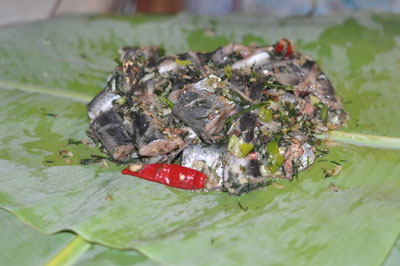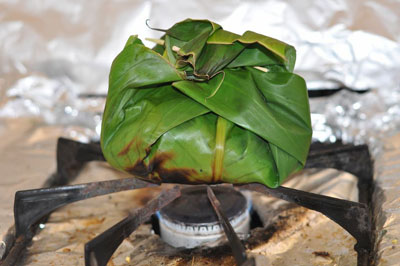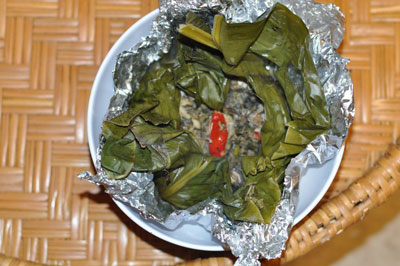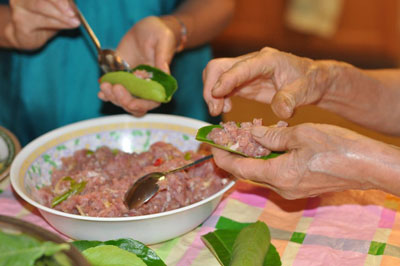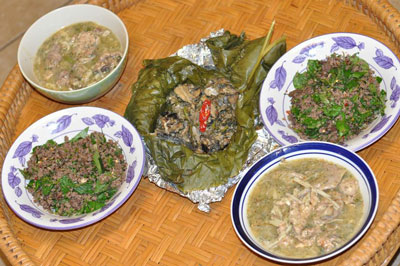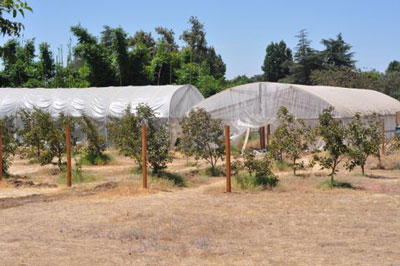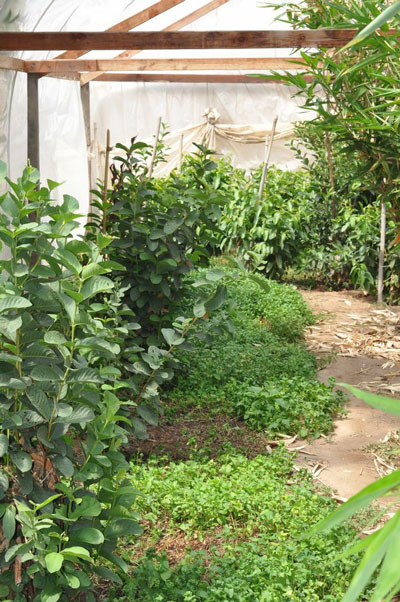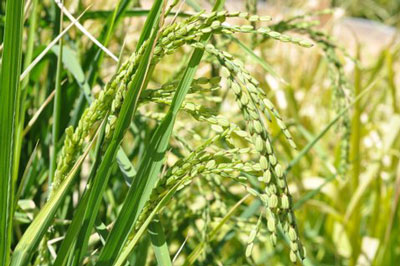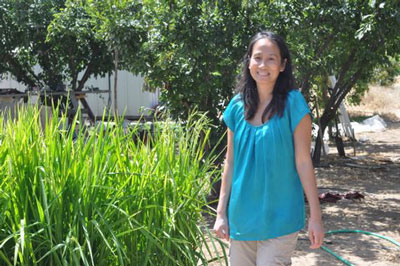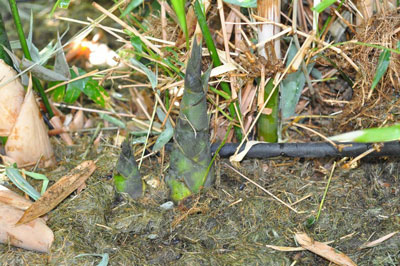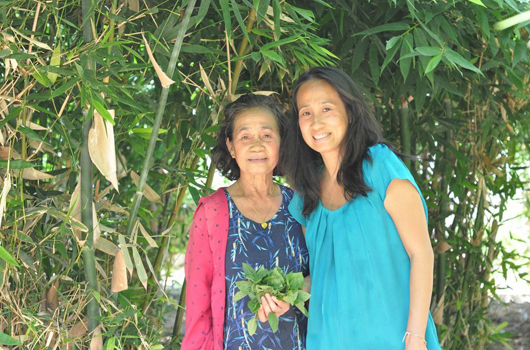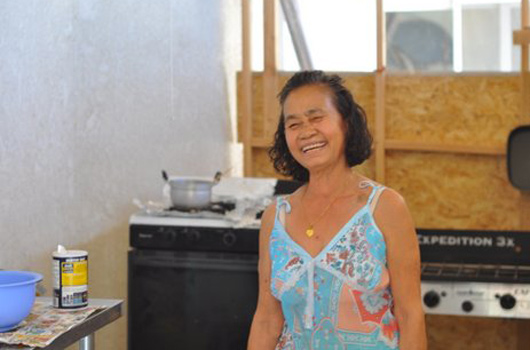Leanne Mounvongkham
Northern Lao weaving and foodways
 In her village in the Sam Neua region of Laos, Leanne Mounvongkham’s family made a livelihood for generations as weavers. Leanne’s mother first taught her to weave when she was ten years old and as a young woman she began working with her mother-in-law, a professional weaver. Until their escape from Laos in 1980, Mounvongkham made skirts to sell in the urban Vientiane market. Even though many of the older Lao women know how to weave, very few have continued to weave after moving to the United States. In Laos, people who are skilled weavers of silk skirts and scarves are greatly admired. They are all the more admired and respected in the United States where few still have looms at home, know how to weave, and take the time to practice this traditional art form.
In her village in the Sam Neua region of Laos, Leanne Mounvongkham’s family made a livelihood for generations as weavers. Leanne’s mother first taught her to weave when she was ten years old and as a young woman she began working with her mother-in-law, a professional weaver. Until their escape from Laos in 1980, Mounvongkham made skirts to sell in the urban Vientiane market. Even though many of the older Lao women know how to weave, very few have continued to weave after moving to the United States. In Laos, people who are skilled weavers of silk skirts and scarves are greatly admired. They are all the more admired and respected in the United States where few still have looms at home, know how to weave, and take the time to practice this traditional art form.
For the Lao in remote rural areas, the process begins with growing cotton or raising silk worms. Living in a weaving household, Mounvongkham became proficient in all aspects of the process in the traditional way, under the guidance of her grandmother and aunt. Leanne is particularly skilled at “embroidering” designs into the warp during the weaving process, resulting in decorated fabric of extraordinary beauty. This uniquely Lao brocading technique of adding threads to the weft (the width of the fabric) is called “supplemental weft” weaving which also gives the designs their striking features. Threads of different colors are individually inserted by hand into the weft and then locked into place by the next weft thread. Pattern sticks raise and lower the threads to create multicolored brocade designs that resemble embroidery.
As a master artist in ACTA’s Apprenticeship Program in 2013, Leanne mentored her daughter and apprentice Khampa Thephavong with the intention of documenting the ingredients and preparation techniques of Northern Laos foodways.
In 2007, Leanne was a master artist in ACTA’s Apprenticeship Program with her apprentice and daughter Kami Thephavong, teaching more complex weaving designs as well as the intricate process of setting up the loom.
In 2000, Leanne was a master artist in the inaugural round of ACTA’s Apprenticeship Program, with her apprentice and daughter, Vilayphone Thephavong. Leanne taught Vilayphone the basics of weaving twenty years ago in Laos; Vilayphone has now come to an age where she has time to devote to learning the advanced artistic skills her mother can teach.
Select Exhibits
Threads of Tradition: Textile Arts of Laos Exhibit, Fresno Art Museum, Fresno, California, 1998
Demonstrations at Festival at the Lake, Oakland, California, 1994
Select Accomplishments
ACTA’s Apprenticeship Program, Master Artist, 2000

.jpg)
.jpg)

